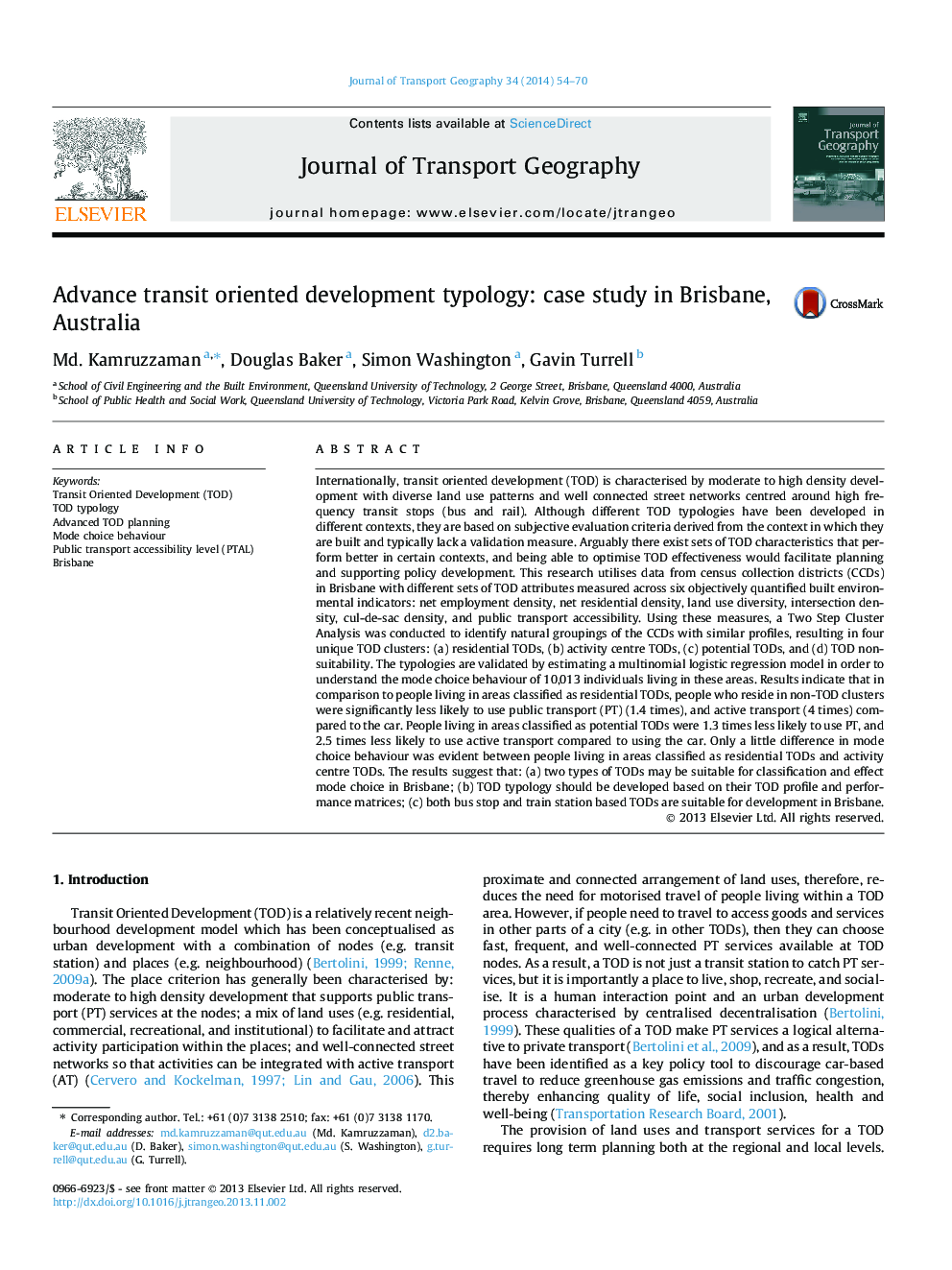| کد مقاله | کد نشریه | سال انتشار | مقاله انگلیسی | نسخه تمام متن |
|---|---|---|---|---|
| 7486211 | 1485433 | 2014 | 17 صفحه PDF | دانلود رایگان |
عنوان انگلیسی مقاله ISI
Advance transit oriented development typology: case study in Brisbane, Australia
ترجمه فارسی عنوان
نوع شناسی پیشرفته ترقی گرا: مطالعه موردی در بریزبن استرالیا
دانلود مقاله + سفارش ترجمه
دانلود مقاله ISI انگلیسی
رایگان برای ایرانیان
کلمات کلیدی
موضوعات مرتبط
علوم زیستی و بیوفناوری
علوم محیط زیست
علوم زیست محیطی (عمومی)
چکیده انگلیسی
Internationally, transit oriented development (TOD) is characterised by moderate to high density development with diverse land use patterns and well connected street networks centred around high frequency transit stops (bus and rail). Although different TOD typologies have been developed in different contexts, they are based on subjective evaluation criteria derived from the context in which they are built and typically lack a validation measure. Arguably there exist sets of TOD characteristics that perform better in certain contexts, and being able to optimise TOD effectiveness would facilitate planning and supporting policy development. This research utilises data from census collection districts (CCDs) in Brisbane with different sets of TOD attributes measured across six objectively quantified built environmental indicators: net employment density, net residential density, land use diversity, intersection density, cul-de-sac density, and public transport accessibility. Using these measures, a Two Step Cluster Analysis was conducted to identify natural groupings of the CCDs with similar profiles, resulting in four unique TOD clusters: (a) residential TODs, (b) activity centre TODs, (c) potential TODs, and (d) TOD non-suitability. The typologies are validated by estimating a multinomial logistic regression model in order to understand the mode choice behaviour of 10,013 individuals living in these areas. Results indicate that in comparison to people living in areas classified as residential TODs, people who reside in non-TOD clusters were significantly less likely to use public transport (PT) (1.4 times), and active transport (4 times) compared to the car. People living in areas classified as potential TODs were 1.3 times less likely to use PT, and 2.5 times less likely to use active transport compared to using the car. Only a little difference in mode choice behaviour was evident between people living in areas classified as residential TODs and activity centre TODs. The results suggest that: (a) two types of TODs may be suitable for classification and effect mode choice in Brisbane; (b) TOD typology should be developed based on their TOD profile and performance matrices; (c) both bus stop and train station based TODs are suitable for development in Brisbane.
ناشر
Database: Elsevier - ScienceDirect (ساینس دایرکت)
Journal: Journal of Transport Geography - Volume 34, January 2014, Pages 54-70
Journal: Journal of Transport Geography - Volume 34, January 2014, Pages 54-70
نویسندگان
Md. Kamruzzaman, Douglas Baker, Simon Washington, Gavin Turrell,
